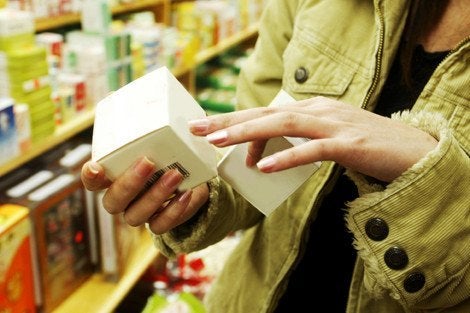February 13, 2014 — In the United States, the average person is exposed to more than a hundred chemicals from cosmetics, soaps, and other personal care products before leaving the house in the morning. While people may assume these products are safe, their chemical ingredients are mostly untested and largely unregulated, with even known carcinogenic and endocrine disrupting chemicals still found in some formulations. What’s more, ingredient labels can be misleading, leaving even the savviest consumers in the dark about the safety of the products they use every day.
“The lipstick we wear, the food we eat, and the soap we use to clean our children’s hands often contain harmful chemicals,” said Mia Davis, head of health and safety for the personal care product company Beautycounter. “The load adds up quickly day after day. And as we swallow, breathe in, and lather up, toxins entering our bodies may have lasting impact.”
Davis delivered her talk, “Toxic Trespass: Harmful & Untested Chemicals in Everyday Products,” to a Harvard School of Public Health (HSPH) audience on February 6, 2014.
Chemical exposure has been linked to rising rates in breast cancer, asthma, autism, reproductive problems, and other health issues, Davis said. Many chemicals in personal care products have never been tested for safety, and may also accumulate and interact in potentially harmful ways.
Under a law that has not been updated since 1938, the U.S. Food and Drug Administration (FDA) has little power to regulate the ingredients in personal care products. Even known offenders such as formaldehyde, triclosan, and phthalates are still legally permissible in product formulations. Companies are allowed to label their products organic, natural, or hospital-approved based on their own interpretation of the terms, Davis said. They can also hide problematic ingredients in proprietary formulations by listing them as “fragrance” on a label.
This landscape is difficult to navigate even for someone as well-educated on the issues as Davis, who described the challenges she experienced as a safety-conscious consumer pregnant with her first child. At Beautycounter, Davis works to help create products that are as safe as possible and also transparently labeled, she said.
Davis pointed out that safer products are common under Europe’s stricter regulatory environment, and that some companies offer safer versions of the same products there than they do in the United States.
Some American companies are, however, slowly changing their practices due to consumer pressure, Davis said. Manufacturers Procter & Gamble and Johnson & Johnson, and retail giants Target and Walmart recently have announced initiatives to address the use of harmful chemicals in beauty products.
But Davis argued that the focus should be on improving legislation to regulate the industry. “Doing this one chemical at a time is not going to work. If we stop at getting rid of parabens in lotion and BPA in baby bottles, we are not making strides for public health,” she said.
“We are not going to know if it was the parabens in lotion that caused my mother-in-law’s breast cancer at 40 with no family history,” Davis said. “But we do know that there are safer alternative ingredients out there that work. We can do better.”
Watch a video of the event, which was sponsored by EcoOpportunity, HSPH’s volunteer sustainability team.
Photo: iStockphoto.com/brazzo
Learn more
Growing number of chemicals linked with brain disorders in children (HSPH News)
